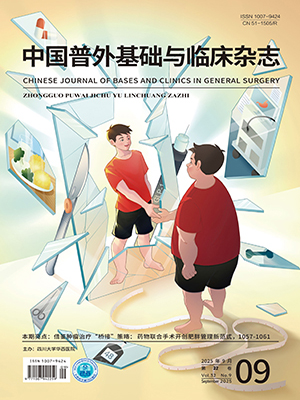| 1. |
Britt KL, Cuzick J, Phillips KA. Key steps for effective breast cancer prevention. Nat Rev Cancer, 2020, 20(8): 417-436.
|
| 2. |
Zhang T, Zhang W, Hao M. Phenethyl isothiocyanate reduces breast cancer stem cell-like properties by epigenetic reactivation of CDH1. Oncol Rep, 2021, 45(1): 337-348.
|
| 3. |
Zhang Q, Chen M, Cao L, et al. Phenethyl isothiocyanate synergistically induces apoptosis with gefitinib in non-small cell lung cancer cells via endoplasmic reticulum stress-mediated degradation of Mcl-1. Mol Carcinog, 2020, 59(6): 590-603.
|
| 4. |
Osipitan OO, Shi Y, Di Pasqua AJ. Phenethyl isothiocyanate-containing carbomer gel for use against squamous cell carcinoma. Pharmaceutics, 2021, 13(1): 106.
|
| 5. |
Oakes SA. Endoplasmic reticulum stress signaling in cancer cells. Am J Pathol, 2020, 190(5): 934-946.
|
| 6. |
Chen X, Cubillos-Ruiz JR. Endoplasmic reticulum stress signals in the tumour and its microenvironment. Nat Rev Cancer, 2021, 21(2): 71-88.
|
| 7. |
Reyes-Fermín LM, Aparicio-Trejo OE, Avila-Rojas SH, et al. Natural antioxidants’ effects on endoplasmic reticulum stress-related diseases. Food Chem Toxicol, 2020, 138: 111229.
|
| 8. |
張美蘭, 沈哲式, 張英哲, 等. 姜黃素誘導人肝癌 BEL-7404 細胞凋亡的內質網應激作用的研究. 吉林醫學, 2021, 42(1): 5-8.
|
| 9. |
林霄, 孫國平, 劉加濤. 抑制肝癌細胞內質網應激可增強槐耳清膏的抗腫瘤作用. 安徽醫科大學學報, 2020, 55(12): 1822-1827.
|
| 10. |
黃靜瑩, 陳萱, 饒靖紅. 內源性大麻素 N-花生四烯酸氨基乙醇介導卵巢癌細胞自噬和內質網應激. 中國病理生理雜志, 2020, 36(11): 2020-2029.
|
| 11. |
Nguyen YT, Moon JY, Ediriweera MK, et al. Phenethyl isothiocyanate suppresses stemness in the chemo- and radio-resistant triple-negative breast cancer cell line MDA-MB-231/IR via downregulation of metadherin. Cancers (Basel), 2020, 12(2): 268.
|
| 12. |
Koschorke A, Faraci S, Giani D, et al. Phenethyl isothiocyanate hampers growth and progression of HER2-positive breast and ovarian carcinoma by targeting their stem cell compartment. Cell Oncol (Dordr), 2019, 42(6): 815-828.
|
| 13. |
Eisa NH, Said HS, ElSherbiny NM, et al. Phenethyl isothiocyanate triggers apoptosis, combats oxidative stress and inhibits growth of ehrlich ascites carcinoma mouse model. Iran J Pharm Res, 2018, 17(4): 1328-1338.
|
| 14. |
胡軍, 徐麗麗, 羅毅, 等. 異硫氰酸苯乙酯經 PI3K/Akt/mTOR 途徑抑制非小細胞肺癌細胞表達 c-Myc和RPS19. 中國細胞生物學學報, 2020, 42(10): 1774-1781.
|
| 15. |
Hsia TC, Huang YP, Jiang YW, et al. Phenethyl isothiocyanate induces apoptotic cell death through the mitochondria-dependent pathway in gefitinib-resistant NCI-H460 human lung cancer cells in vitro. Anticancer Res, 2018, 38(4): 2137-2147.
|
| 16. |
Hetz C, Zhang K, Kaufman RJ. Mechanisms, regulation and functions of the unfolded protein response. Nat Rev Mol Cell Biol, 2020, 21(8): 421-438.
|
| 17. |
Dilly AK, Honick BD, Lee YJ, et al. Synergistic apoptosis following endoplasmic reticulum stress aggravation in mucinous colon cancer. Orphanet J Rare Dis, 2020, 15(1): 211.
|
| 18. |
Park WJ, Park JW. The role of sphingolipids in endoplasmic reticulum stress. FEBS Lett, 2020, 594(22): 3632-3651.
|
| 19. |
Park SJ, Li C, Chen YM. Endoplasmic reticulum calcium homeostasis in kidney disease: pathogenesis and therapeutic targets. Am J Pathol, 2021, 191(2): 256-265.
|
| 20. |
Cakir I, Nillni EA. Endoplasmic reticulum stress, the hypothalamus, and energy balance. Trends Endocrinol Metab, 2019, 30(3): 163-176.
|




